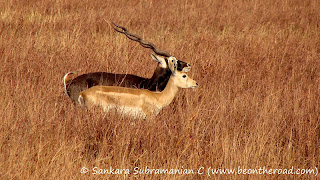Born in a tiny hamlet at Amrapur in Saurashtra, 91-year-old businessman Manibhai Sunderji Doshi has lead a long arduous life. However, even at his age, he has an elephant’s memory and is fastidious with dates. Having sailed between Japan and India to pursue his family’s import-export business of pure silk, Doshi spent most of his formative years away from home after completing his education in Amreli. But his stay in Japan was, in his own words, “life-altering.” It was in Japan where he met Rash Behari Bose. Like several men from his generation, India's independence movement stirred him as well. In fact, he was also a part of revolutionary Netaji Subhash Chandra Bose's army at the time. “I was deeply influenced by their philosophy and courage. It was while I was fighting in the Second World War, that I learnt not to fear death. It is inevitable. Fear kills you everyday. I would rather die once like a cherryblossom,” he says.
Family time
Today, Doshi lives at his commodious home in Vile Parle. His immediate family comprises five sons, their wives, one daughter, and 11 grandchildren. He makes sure he spends quality time with all of them. “No one is more important than your family. In times of crisis, they are the only ones who you can count on entirely. So value and cherish them,” he advises. He has a sanguine approach to life. He was happily to his wife for five decades before he lost her 17 years ago. But he never let loneliness get to him.
Stay active
Till today, the veteran is constantly on the go. If he is not pottering around at his silk mill factory in Kurla, where he spends almost seven hours a day at work, he hops over to the nearby Prithvi Theatre, Bhaidas Hall to catch a play, or to PVR cinema to watch a film. He goes on a vacation twice a year, mostly accompanied by his daughter Darshana who lives with him. “Even at his age, he travels by train and coaxes us to do the same. He has more energy and zest than five of me put together. He believes in taking time out and spending it with himself in leisure. We are planning a trip abroad next month and he is as usual, thoroughly excited," says his 54-year-old daughter.
Take the time to exercise
Starting his day as early as 6 am with an hour-long yoga session at home is what keeps the veteran in excellent shape. He sleeps by 10 and ensures that he gets a good eight-hour-long sleep. After drinking his mandatory glass of doodhi juice with ginger-honey, he goes for a stroll to Juhu beach every day where he catches up with his coterie of friends and well-wishers. “I don't miss my yoga class for anything. I get a teacher to come home. It helps me stay fit and active throughout the day,” he says. Post his walk, Doshi eats a wholesome breakfast, which consists of bajra or bhakra roti and curd on most days. Says Doshi, “Bajra rotis are a dietary must. Even when I was staying in Japan, we used to ship the Bajra across. It contains iron and helps you remain strong.”
Follow a simple diet
For his lunch and dinner, Doshi follows a simple sabzi-rotidal diet. Apart from being a vegetarian all his life, he has seldom consumed aerated drinks, alcohol, fried foods and street grubs. “I also try and incorporate sprouts, salads as well as fruits inbetween my meals,” he says. He's also regular with his health check ups. “Your body is a machine. You need servicing sometimes and have to recharge yourself with a few tonics,” he smiles.
Lead a philanthropic life
“But more than the body, one must work towards spiritual empowerment. There is nothing more fulfilling in life than giving. It's only when you learn to give, that you learn to receive,” he says. Incidentally, Doshi had started the Polio immunisation camp in the baalwaadis of the slum areas in Juhu in the 1990s. He owes his philanthropic inspiration of life to Mahatma Gandhi. “He did a lot for others, for his community, for the nation as a whole. Through his teachings I leant that selflessness is possible,” says Doshi, who had participated in Mahatma's Satyagraha struggle and until date, only dresses in khadi.
Spend time reading
Inevitably, the voracious reader's, who has an enviable collection of books, most preferred volume, remains Gandhi's The story of my experiments with truth. “Of all the books, this is my most prized possession. Gandhi's life truly inspires me. Besides, reading keeps my mind alert and betters my concentration," he says. He even picks up the newspaper every morning and painstakingly sifts through the news. He is clued into arts, politics, as well as the country's daily affairs and talks shop, endlessly.
Keep going
Given that most people these days feel burnt out at 50, the nonagenarian's mantra in life is both heartwarming and inspiring. What keeps him going? He says simply, "When did I ever stop? There is no retirement. Everything that is stagnant stinks, muck for instance. You rather be like the river and continue flowing.”
Reema.Gehi@timesgroup.com
source :
http://www1.m.timesofindia.com/PDATOI/articleshow/8529094.cms














